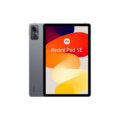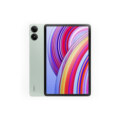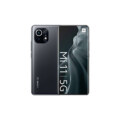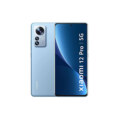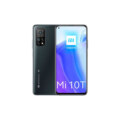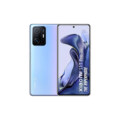Xiaomi Poco F6
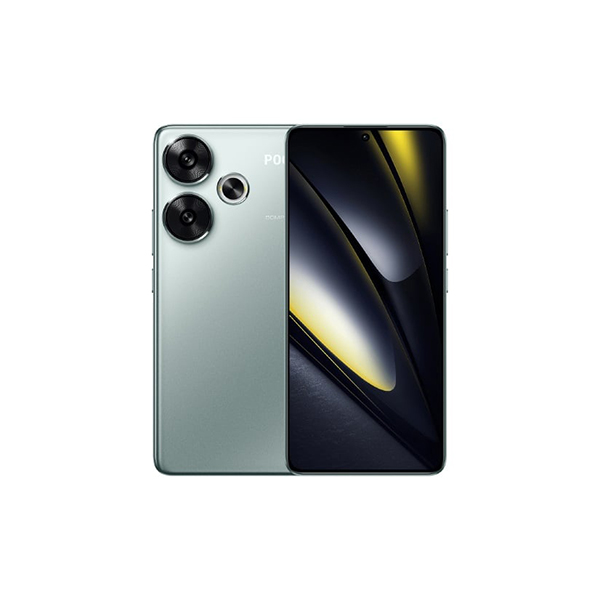

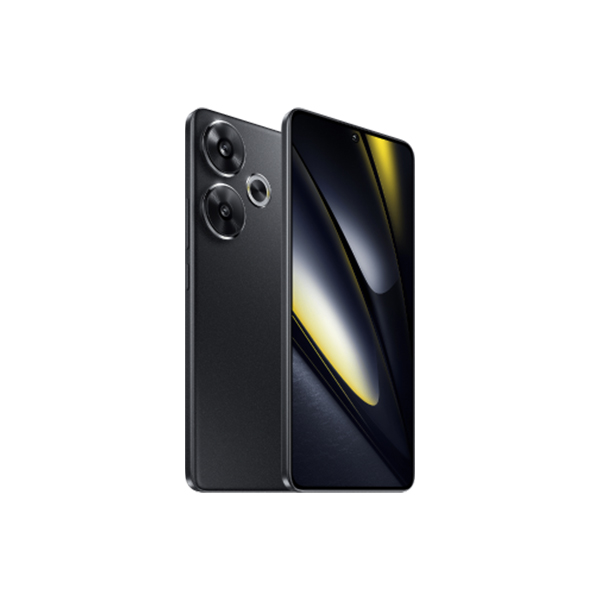
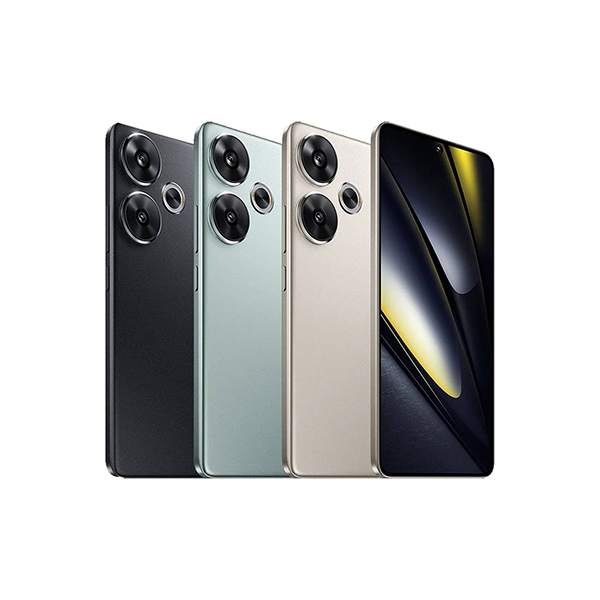
Specs
General
| Device Type | Xiaomi Redmi Phone |
| Announced | 23 May, 2024 |
| Released | 24 May, 2024 |
| Status | Available |
Design
| Dimensions | 160.5 x 74.5 x 8 mm |
| Weight | 179 g |
| Protection | Glass front (Gorilla Glass Victus), plastic frame, plastic back |
| Colors | Black, Green, Titanium |
Display
| Refresh Rate | 120 Hz |
| Display Type Display Technology => A number of display technologies and types used in mobile phones => TFT (Thin Film Transistor), IPS (In-Place Switching), OLED (Organic Light Emitting Diode), AMOLED (Active-Matrix Organic Light-Emitting Diode), Super AMOLED (an even advanced version of AMOLED), Resistive Touchscreen (Resistive touchscreens contain two layer of conductive material with a very small gap between them which acts as a resistance), Capacitive Touchsceen (Capacitive touchscreen technology consists of a layer of glass coated with a transparent conductor) | AMOLED |
| Size | 6.67 inches |
| Resolution | 1080 x 2400 pixels |
| Display Colors Display Colors is refers to the number of different shades of colors that the screen is capable of displaying => 64K colors, 256K colors and 16 million colors, Obviously 16M is highest available range of colors and better than others. | 68B |
| Pixel Density Pixel Density (PPI) is refers to the concentration of pixels on a particular display, measured in pixels per inch (ppi). Pixel density is calculated by dividing the diagonal pixel resolution of a display by its diagonal size, higher pixel density better display quality. | ~ 446 ppi |
| Touch Screen | Capacitive Touchscreen, Multitouch |
| Display Protection Display Protection => Gorilla Glass is a special alkali-aluminosilicate glass shield with exceptional damage resistance that helps protect mobile displays from scratches, drops, and bumps of everyday use, It is always better to go for a smartphone with Gorilla Glass for that added protection and peace of mind. | Corning Gorilla Glass 5 |
| Features | HDR10+, Dolby Vision, 500 nits (typ), 1200 nits (HBM), 2400 nits (peak) |
| Secondary Display | No |
Camera
| Front Camera | Motorized pop-up 20 MP, f/2.2, (wide) |
| Camera Setup | Double |
| Main Camera Camera is able to capture photographs and usually videos, The most important characteristics of a camera are the resolution (measured in megapixels), lens focus type (fixed or automatic), higher megapixel cameras are known to capture higher quality photos, but not always a good measurement of the photos quality. |
50 MP, f/1.6, (wide) 8 MP, (ultrawide) |
| Video | 4K@30/60fps, 1080p@30/60/120/240fps, gyro-EIS |
| Camera Features | HDR, panorama |
| Flash Flash Light => There is commonly two types of flash lights are used in camera mobile phones, LED Flash (LED flash offers lower power consumption with drive circuitry that takes up very little room, LEDs can be strobed faster than any other light source), Xenon Flash (xenon flash produces an extremely intense full-spectrum white light for a very short duration) | LED flash |
Hardware
| Operating System OS => Every computer system run on a base software called Operating System (OS). Operating System controls all basic operations of the computer (such as smartphone, PDAs, tablet computers and other handheld devices). The Operating System allows the user to install and run third party applications (apps), apps are used to add new functionality to the device. | Android 14 |
| Chipset Chipset is a group of integrated circuits designed to perform one or a more dedicated functions, often with real time computing constraints, Popular smartphones are equipped with more advanced embedded chipsets that can do many different tasks depending on their programming. | Qualcomm SM8635 Snapdragon 8s Gen 3 |
| CPU CPU (Central Processing Unit) mostly known as processors, CPU processes instructions in order to carry out certain functions that make your device operate properly. Processors are often described as the brain of computers, smartphones and tablets, Smartphones and tablets rely on processors to carry out their every task, Processors are an incredibly important factor in selecting any type of computing device, including your smartphone. | Octa-core (1 x 3.0 GHz Cortex-X4 + 4 x 2.8 GHz Cortex-A720 + 3 x 2.0 GHz Cortex-A520) |
| Architecture | 64 bit |
| Fabrication | 4 nm |
| GPU GPU (Graphics Processing Unit) is a single-chip processor designed to rapidly manipulate and alter memory to accelerate the creation of images in a frame buffer intended for output to a display, This includes things such as lighting effects, object transformations, and 3D motion. | Adreno 735 |
| RAM (Memory) RAM (Random Access Memory) is a type of computer memory that can be accessed randomly, any byte of memory can be accessed without touching the preceding bytes that allows information to be stored and accessed quickly from random locations. RAM is the most common type of memory found in computer systems, smartphones, tablets and other electronic devices. | 8 GB |
| Internal Storage Internal Storage is a data storage space (flash memory) mostly used in smartphones, tablets and other electronic devices where operating system, apps, music, photos, videos, files and other user data Is stored. | 256 GB |
| Card Slot Memory Card Slot is a special slot for inserting a memory card. Memory cards allow you to expand the phone's built-in memory, A memory card (sometimes called a flash memory card or a storage card) is a small storage medium used to store data such as text, pictures, audio, and video, for use on small, portable or remote computing devices such as mobile phones, mp3 players, digital cameras. | |
| Sensors Sensors are electronic components that detects and responds to some type of input from the physical environment. The specific input could be light, heat, motion, moisture, pressure and location, The output is generally a signal that is converted to use in computing systems, a location sensor, such as a GPS receiver is able to detect current location of your electronic device. | Accelerometer, Compass, FingerPrint (under display, optical), Gyro, Proximity |
Network
| SIM TYPE SIM (Subscriber Identity Module) is a small card that contains mobile network subscriber's account information. This allows the phone using the card to attach to a mobile network. The SIM card is most commonly associated with GSM and UMTS mobile networks. Moving a SIM card from one phone to another allows a subscriber to switch mobile phones without having to contact their mobile network carrier. SIM cards can also be used by a phone to store limited amounts of data, such as phone numbers and text messages. | Nano SIM |
| SIM Technology | Dual Sim, Dual Standby (Nano-SIM) |
| 2G Network | GSM 850 / 900 / 1800 / 1900 |
| 3G Network | HSDPA 850 / 900 / 1700(AWS) / 1900 / 2100 |
| 4G Network | LTE band 1(2100), 3(1800), 5(850), 8(900), 34(2000), 38(2600), 39(1900), 40(2300), 41(2500) |
| 5G Network | SA/NSA |
Multimedia
| FM Radio | |
| Stereo Speakers | YES |
| Loudspeaker | YES |
| Audio Jack | NO |
| Audio Features | 24-bit/192kHz Hi-Res & Hi-Res Wireless audio |
Connectivity
| Wi-fi Wi-Fi is a popular wireless networking technology using radio waves to provide high-speed network connections that allows devices to communicate without cords or cables, Wi-Fi is increasingly becoming the preferred mode of internet connectivity all over the world. | Wi-Fi 802.11 a/b/g/n/ac/6, dual-band |
| Bluetooth Bluetooth is a wireless communications technology for exchanging data between mobile phones, headsets, computers and other network devices over short distances without wires, Bluetooth technology was primarily designed to support simple wireless networking of personal consumer devices. | v5.4 with A2DP, LE |
| GPS GPS The Global Positioning System is a satellite-based radio navigation system, GPS permits users to determine their position, velocity and the time 24 hours a day, in all weather, anywhere in the world, In order to locate your position, your device or GPS receiver must have a clear view of the sky. | A-GPS, GALILEO, GLONASS, QZSS, BDS (B1I+B1c) |
| USB | USB Type-C 2.0, OTG |
| EDGE EDGE (Enhanced Data GSM Environment) is a wireless network technology generally considered the next step in the 2G network offers data transfer rates up to four times faster than ordinary GSM networks, Generally, EDGE is used for the purpose of wireless data transfer, such as sharing pictures and videos or browsing the Internet via a mobile phone connection. | |
| GPRS GPRS (General Packet Radio Service) is a packet oriented mobile data service on the 2G and 3G cellular communication system's global system for mobile communications (GSM), Generally, GPRS is used for the purpose of wireless data transfer, such as sharing pictures and videos or browsing the Internet via a mobile phone connection. | |
| Speed | 3G (HSPA 42.2/5.76 Mbps), 4G LTE, 5G Capable |
| Wi-fi Hotspot | |
| NFC NFC (Near field communication) is a set of standards for smartphones and similar devices to establish peer-to-peer radio communications with each other by touching them together or bringing them into proximity, usually no more than a few inches. |
Features
| Messaging | SMS(threaded view), MMS, Email, Push Mail, IM |
| Web Browser Web Browser => a web browser is a software application used to locate, retrieve and display content on the World Wide Web, including Web pages, images, video and other files, The primary function of a web browser is to render HTML, the code used to design or markup webpages. | HTML5 |
| Games | Built-in + Downloadable |
| Torch |
Battery
| Battery Type Battery Type => Cell phones run on various kinds of batteries depending on the manufacturer, phone size or shape and features. There are basically four types of cell phone batteries => Lithium Polymer, Lithium Ion, Nickel Metal Hydride and Nickel Cadmium. | Li-Ion (Lithium Ion) |
| Capacity Battery Capacity is a measure (typically in Amp-hr) of the charge stored by the battery, and is determined by the mass of active material contained in the battery. The battery capacity represents the maximum amount of energy that can be extracted from the battery under certain conditions. | 5000 mAh |
| Placement | Non-removable |
| Wireless Charging Wireless Charging (Inductive Charging) uses an electromagnetic field to transfer energy between two objects. This is usually done with a charging station. Energy is sent through an inductive coupling to an electrical device, which can then use that energy to charge batteries or run the device. | No |
| Extra |
Fast battery 90W wired PD3.0 100% in 35 min (advertised) |
Xiaomi Poco F6: Detailed Review
Introduction:
The Xiaomi Poco F6, launched in early 2024, builds on the success of the Poco F series, offering flagship-grade performance at a more affordable price. With its powerful Snapdragon processor, high-refresh-rate AMOLED display, versatile camera setup, and solid battery life, the Poco F6 is designed for users who seek high performance without the premium cost. In this review, we’ll cover its design, display, performance, camera system, battery life, software, and a breakdown of its pros and cons.
Specifications at a Glance
- Display: 6.67-inch AMOLED, FHD+ (2400 x 1080), 120Hz, HDR10+
- Processor: Qualcomm Snapdragon 8+ Gen 1
- RAM: 8GB or 12GB LPDDR5
- Storage Options: 128GB or 256GB UFS 3.1 (no microSD expansion)
- Rear Cameras:
- 50 MP (wide, f/1.8, OIS)
- 13 MP (ultrawide, f/2.2)
- 5 MP (macro, f/2.4)
- Front Camera: 16 MP (f/2.4)
- Battery: 5000 mAh, 67W fast charging
- Operating System: MIUI 14 for Poco, based on Android 13
- Other Features: In-display fingerprint sensor, stereo speakers, 5G support, IR blaster
Design and Build Quality
Aesthetics:
The Poco F6 sports a sleek, modern design with a flat glass front and back, framed by aluminum. Its matte finish on the back gives it a premium feel while also reducing fingerprints and smudges. The camera module, though prominent, integrates well into the design, adding a clean, futuristic look. The phone is available in several striking colors, including black, blue, and white.
Durability:
Protected by Gorilla Glass 5 on both sides, the Poco F6 is built to resist everyday wear and tear. While it lacks official water and dust resistance ratings, the build feels sturdy, and it’s generally durable for regular use.
Ergonomics:
At 204 grams, the phone is slightly heavier than some competitors, but the weight is well-balanced. The 6.67-inch screen may make one-handed use a bit difficult for some users, but overall, it feels comfortable in hand thanks to its curved edges.
Display
Specifications:
- Size: 6.67-inch AMOLED
- Resolution: 2400 x 1080 (FHD+)
- Refresh Rate: 120Hz
- Brightness: Up to 1000 nits peak brightness
- HDR Support: HDR10+
Performance:
The Poco F6’s AMOLED display is one of its standout features. It delivers vibrant colors, deep blacks, and sharp detail, providing a top-tier experience for media consumption, gaming, and daily tasks. The 120Hz refresh rate ensures smooth scrolling and responsive touch interaction, making the phone feel fast and fluid.
With HDR10+ support, the Poco F6 is perfect for watching high-quality video content, with enhanced contrast and color accuracy. Its high brightness ensures good outdoor visibility, even under direct sunlight.
Performance
Hardware:
- Processor: Qualcomm Snapdragon 8+ Gen 1
- RAM: 8GB or 12GB LPDDR5
- Storage: 128GB or 256GB UFS 3.1 (non-expandable)
Performance Evaluation:
Powered by the Snapdragon 8+ Gen 1 chipset, the Poco F6 delivers flagship-level performance, handling demanding tasks like gaming, video editing, and multitasking with ease. Apps open quickly, transitions are smooth, and there’s no noticeable lag, even when running multiple apps in the background.
The 8GB or 12GB of RAM, combined with UFS 3.1 storage, ensures fast read/write speeds and fluid multitasking. For gaming enthusiasts, the Adreno 730 GPU provides excellent graphics performance, allowing games like PUBG Mobile and Genshin Impact to run at high settings without stuttering or frame drops. The phone also features LiquidCool technology to keep temperatures under control during extended gaming sessions.
Camera System
The Xiaomi Poco F6 comes with a versatile triple-camera setup that performs well in most scenarios.
Rear Cameras:
- Main Camera: 50 MP (wide, f/1.8, OIS)
- Ultrawide Camera: 13 MP (f/2.2)
- Macro Camera: 5 MP (f/2.4)
Front Camera:
- Resolution: 16 MP (f/2.4)
Camera Performance:
The 50 MP main camera takes excellent photos in good lighting conditions, with sharp details and vibrant colors. Optical Image Stabilization (OIS) helps reduce blur in low-light scenarios, improving night photography. The ultrawide camera adds versatility, allowing for more dynamic landscape and group shots, though there is a slight drop in detail in lower light.
The 5 MP macro lens is a fun addition for close-up photography, capturing intricate details of small objects, though it’s more of a niche feature.
Video Recording:
The Poco F6 supports 4K video recording at 60fps, with good stabilization thanks to the OIS. It performs well for both casual and professional videography, though its low-light performance could be better.
Battery Life
Specifications:
- Battery Capacity: 5000 mAh
- Charging Speed: 67W fast charging
Performance:
The 5000 mAh battery ensures that the Poco F6 can comfortably last a full day of heavy use. With moderate usage, including social media, gaming, and streaming, users can easily get up to two days of battery life. The 67W fast charging feature is a standout, charging the phone from 0% to 100% in about 40 minutes, ensuring minimal downtime.
While the phone doesn’t support wireless charging, the fast wired charging more than compensates for this omission.
Software
Operating System:
The Poco F6 runs on MIUI 14 for Poco, which is based on Android 13. MIUI 14 brings a host of features and customizations, including system-wide dark mode, gesture navigation, and a redesigned control center. It also provides plenty of options for personalization, from themes to icon packs.
However, MIUI comes with some pre-installed apps (bloatware), which can be annoying for some users. While they can be removed or disabled, their presence detracts from an otherwise clean software experience.
User Experience:
The software is fluid and responsive, with no significant bugs or performance issues. Regular updates keep the phone secure and up-to-date with the latest features.
Pros & Cons
Pros:
- Powerful Processor: Snapdragon 8+ Gen 1 delivers excellent performance for gaming, multitasking, and daily use.
- Vibrant Display: The 120Hz AMOLED screen offers stunning colors, deep blacks, and smooth animations.
- Versatile Camera Setup: The 50 MP main camera with OIS, ultrawide, and macro lenses provide great versatility for photography.
- Long-Lasting Battery: 5000 mAh battery with 67W fast charging ensures minimal downtime.
- 5G Support: Future-proofed with 5G connectivity for faster network speeds.
Cons:
- No Wireless Charging: Despite fast wired charging, the absence of wireless charging is a downside.
- No MicroSD Slot: Lack of expandable storage may be a limitation for users who need more than 256GB.
- Bloatware in MIUI: The software includes pre-installed apps that may clutter the user experience.
- Slightly Bulky: At 204 grams, it might feel heavy for some users, especially for one-handed use.

Conclusion
The Xiaomi Poco F6 offers a compelling package of flagship-level performance, a vibrant display, and solid battery life at an affordable price. While it lacks some premium features like wireless charging and expandable storage, it compensates with its powerful Snapdragon processor, versatile camera system, and fast charging. For users seeking a well-rounded smartphone experience without the flagship price tag, the Poco F6 is a highly recommended choice.
Review
Disclaimer Note
All prices in Pakistan is updated daily from the price list provided by local shops and dealers but we can not guarantee that the information / price on this page is 100% correct (Human error is possible), always visit your local shop for exact cell phone cost & rate.

